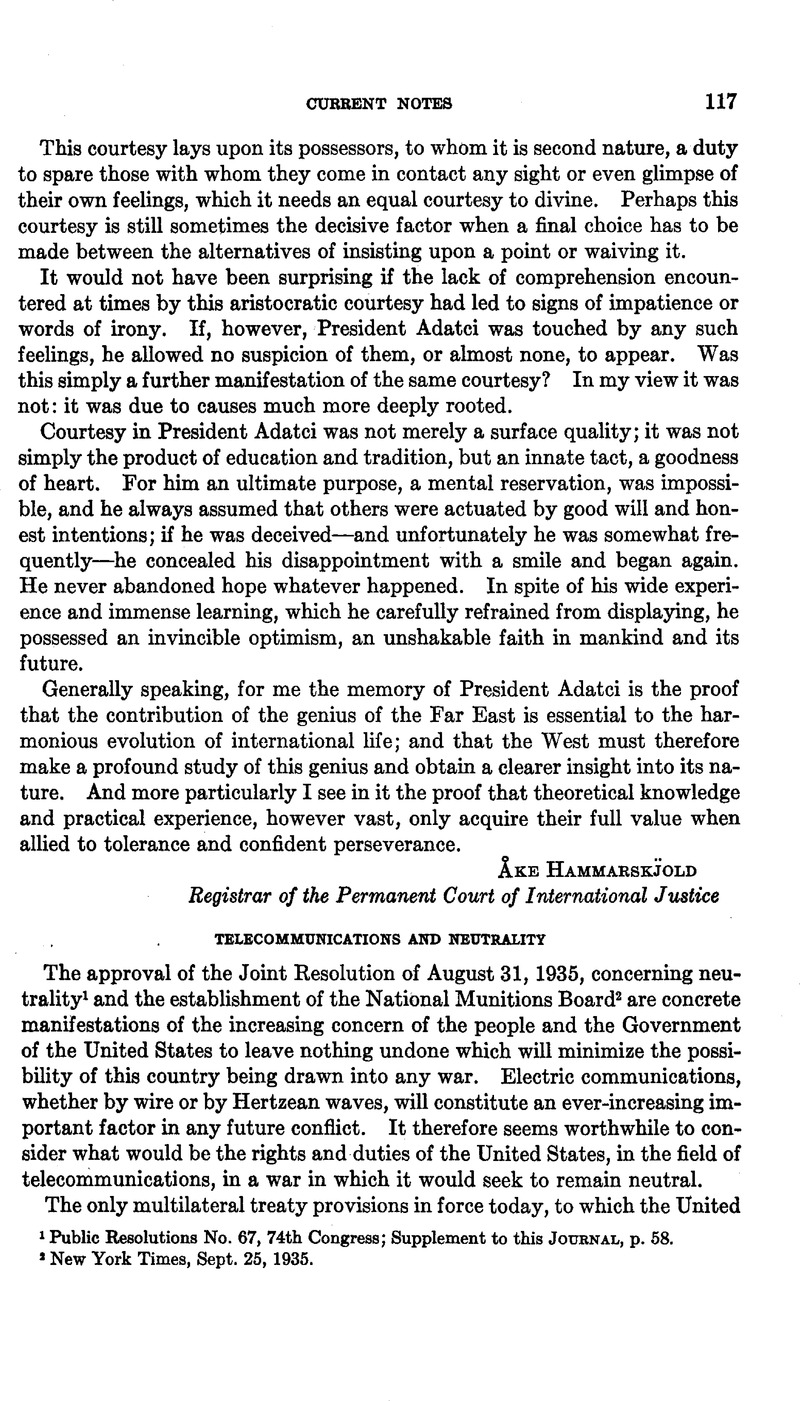Published online by Cambridge University Press: 12 April 2017

1 Public Resolutions No. 67, 74th Congress; Supplement to this Journal, p. 58.
2 New York Times, Sept. 25, 1935.
3 Convention Respecting the Rights and Duties of Neutral Powers and Persons in War on Land, Malloy, Treaties, Conventions, etc. between the United States and other Powers, p. 2290; Supplement to this Journal, Vol. 2 (1908), pp. 118-120.
4 Convention Concerning the Rights and Duties of Neutral Powers in Naval War, Malloy, ibid., p. 2352; Supplement, ibid., p. 205.
5 “Radioélectricité en Tempe de Guerre,” by Mr. A. de La Pradelle {Revue Internationale de la Radioélectricité, No. 41, p. 34) : “Au cours de la dernière guerre, pour échapper aux réclamations et d’une manière générale à ce qu’un auteur américain a appelé ‘les ennuis de la neutralité’, la plupart des neutres ont adopté une politique de réglementation sévère, voire même d’interdiction des communications radioélectriques, sans tenir compte de la distinction établie dans les conventions.” He adds that during the World War Switzerland absolutely forbade the use of radio receiving and sending sets in Switzerland. The text of the Ordinance of the Swiss Federal Council of Aug. 2,1914, will be found on page 68 of International Law Topics (Naval War College, 1916).
6 Foreign Relations of the United States, 1914, Supplement, p. 668.
7 Ibid., p. 678.
8 37 Stat. 303.
9 For the text of the instructions relative to the operation of the Tuckerton Badio Station, see Foreign Relations of the United States, 1914, Supplement, p. 679.
10 Regulations concerning Government radio communications prepared by the Navy Department, Foreign Relations of the United States, 1914, Supplement, p. 680.
11 Foreign Relations, United States, 1916, Supplement, p. 6.
12 Command Paper 2201 (1924) ; see “The Laws of War Concerning Aviation and Radio,” by Rear Admiral Rodgers, William L., this Journal , Vol. 17 (1923), p. 629 Google Scholar; for text of the General Report of the Commission of Jurists, see ibid., Supplement, p. 242.
13 48 Stat. 1105.
14 See telegram from Ambassador Gerard in Berlin to Secretary of State, Aug. 30, 1914, concerning ownership of Tuckerton and Sayville stations, Foreign Relations of the United States, Supplement, 1914, p. 677.